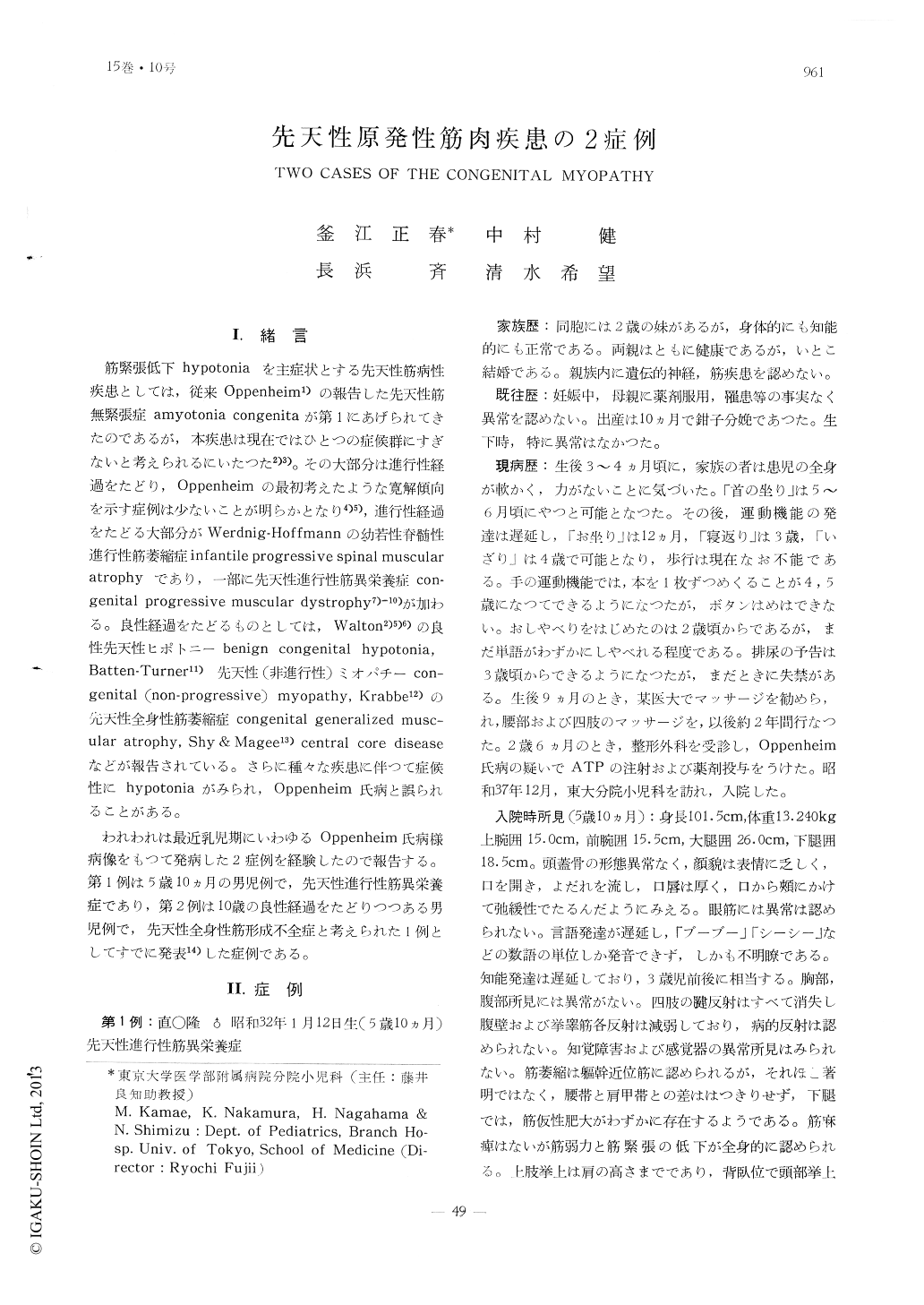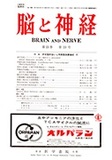Japanese
English
- 有料閲覧
- Abstract 文献概要
- 1ページ目 Look Inside
I.緒言
筋緊張低下hypotoniaを主症状とする先天性筋病性疾患としては,従来Oppenheim1)の報告した先天性筋無緊張症amyotonia congenitaが第1にあげられてきたのであるが,本疾患は現在ではひとつの症候群にすぎないと考えられるにいたつた2)3)。その大部分は進行性経過をたどり,Oppenheimの最初考えたような寛解傾向を示す症例は少ないことが明らかとなり4)5),進行性経過をたどる大部分がWerdnig-Hoffmannの幼若性脊髄性進行性筋萎縮症infantile progressive spinal muscular atrophyであり,一部に先天性進行性筋異栄養症con—genital progressive muscular dystrophy7)−10)が加わる。良性経過をたどるものとしては,Walton2)5)6)の良性先天性ヒポトニーbenign congenital hypotonia, Batten-Turner11)先天性(非進行性)ミオパチーcon—genital (non-progressive) myopathy, Krabbe12)の先天性全身性筋萎縮症congenital generalized musc—ular atrophy, Shy & Magee13) central core diseaseなどが報告されている。さらに種々な疾患に伴つて症候性にhypotoniaがみられ,Oppenheim氏病と誤られることがある。
われわれは最近乳児期にいわゆるOppenheim氏病様病像をもつて発病した2症例を経験したので報告する。第1例は5歳10ヵ月の男児例で,先天性進行性筋異栄養症であり,第2例は10歳の良性経過をたどりつつある男児例で,先天性全身性筋形成不全症と考えられた1例としてすでに発表14)した症例である。
Two cases of the congenital myopathy, of which onset originated early in infancy with a sign of hypotonia, were reported. The first case, a boy aged 5 yrs. 10 mos., was diagnosed "congenital progressive muscular dystrophy". The muscles of the shoulder-and pelvic-girdles were equally affected, and the muscles of the face were markedly affected. He revealed a little muscle wasting in the proximal parts of the limbs, and slight pseudohypertrophy of muscles in the lower legs. He was unable to walk, and showed mental deficiency. Tendon reflexes disappeared, urinary excretion of cr-eatine increased and serum enzyme activities elevated. The electromyography and a muscle biopsy showed myogenic pattern.
The second case, a chinese boy aged 10 yrs., was considered congenital universal muscular hypoplasia. Muscle wasting distributed equally all over the body. Muscle weakness was very evident, being not associated with pseudohy-pertrophy of muscles. Ocular movoments were prominently disturbed. Tendon reflexes were well retained. Urinary excretion of creatine increased, but the serum enzyme activities were essentially within normal range. Low voltage and a few diminution of unit discha rges were the findings in the electromyogram. The clinical course has been non-progressive.

Copyright © 1963, Igaku-Shoin Ltd. All rights reserved.


